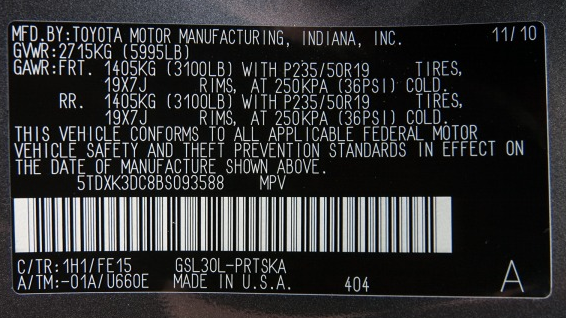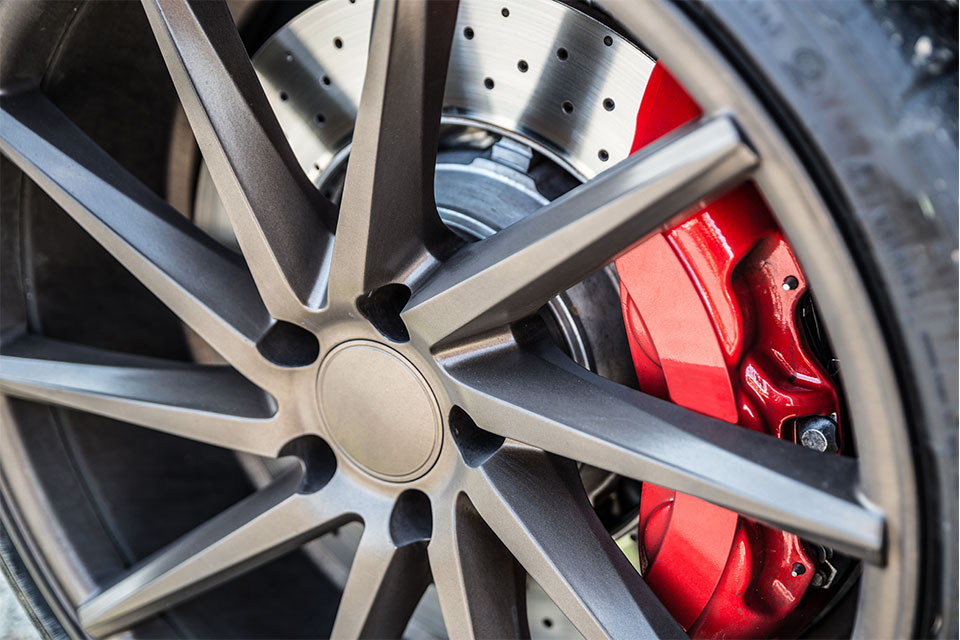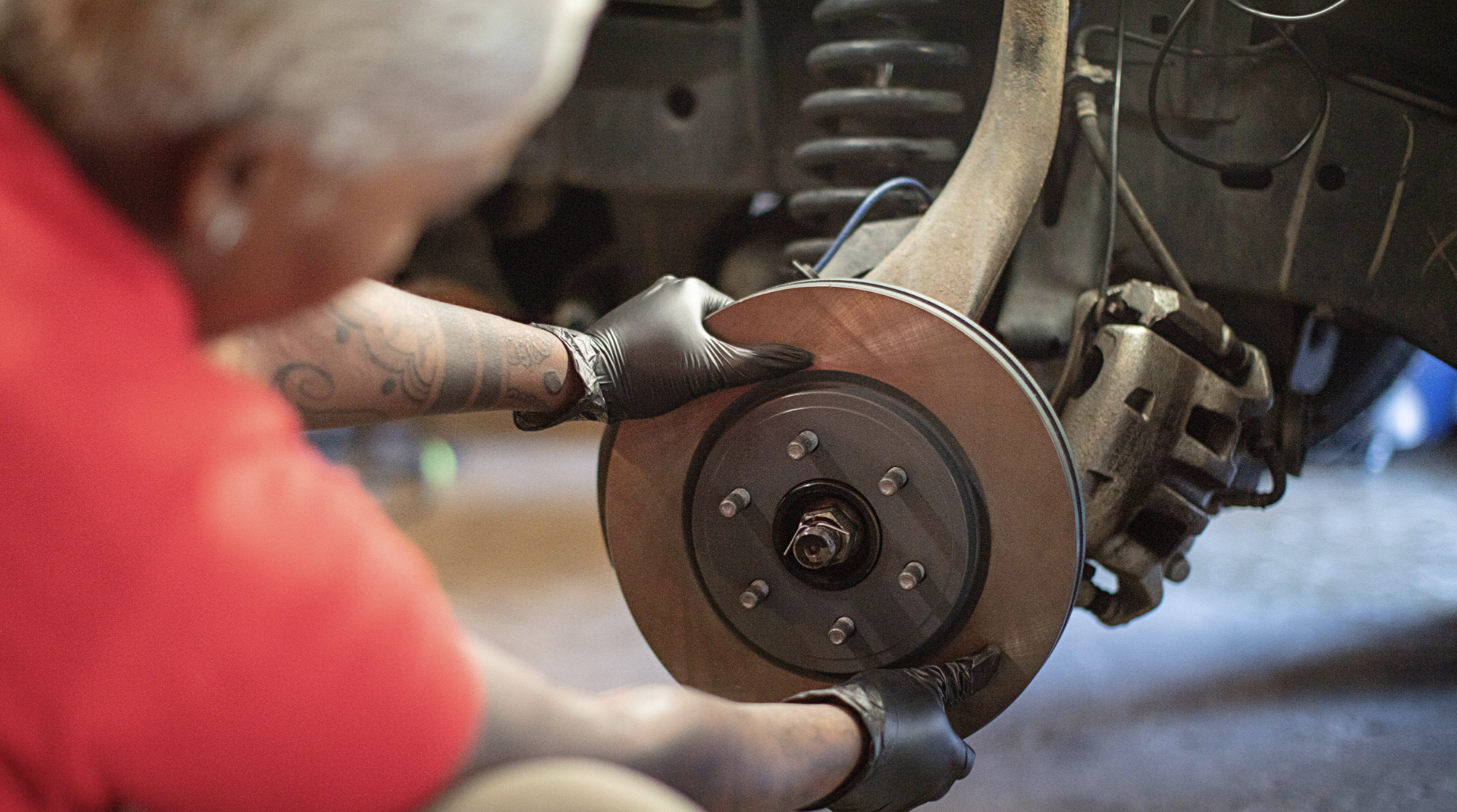 Source/Kevin Dooley/Flickr The VIN (vehicle identification number) of your car has been described as its fingerprint–no other vehicle can have the exact same one, even if the other vehicle is close enough to yours to be its “twin.” It’s also been compared to your car’s social security number.
Source/Kevin Dooley/Flickr The VIN (vehicle identification number) of your car has been described as its fingerprint–no other vehicle can have the exact same one, even if the other vehicle is close enough to yours to be its “twin.” It’s also been compared to your car’s social security number.
History of the VIN
VINs first existed in 1954, but their length and code values were not yet standardized. That changed in 1981, when the National Highway Traffic Safety Administration (NHTSA) began requiring standardized VINs for any vehicle that took to the road. As far as the number’s location in your vehicle, NHTSA says the VIN must be inside the vehicle, and visible through the windshield when you’re looking through the left windshield pillar. It must also–fairly enough–be readable. The main purpose of the VIN is to definitively identify a specific vehicle, but its usage goes beyond that. According to DMV.org (a privately owned, non-governmental site), “deciphering these codes is a hobby for some car enthusiasts, including collectors who want to own one of the first or last cars to come off an assembly line.” Plus, of course, it’s a great way to understand the history of your vehicle–or the vehicle you’re thinking about buying.
Truth–or urban myth?
Myth busting is fun and, if you look online, you’ll find plenty of places willing to tell you that a man named Steve Maxwell “invented” the VIN. Steve apparently didn’t fully understand the value of his invention, as he apparently wrote it down on the back of a bar napkin and sold the idea to a far shrewder tavern patron for $1,000. The VIN, we are assured, “soon evolved” into today’s system. True or false? Unfortunately, we don’t know. Snopes had nothing to say on the matter and a search on Google patents didn’t shed any light, either. At some point, we knew we needed to cry uncle and get back to selling car parts, and so we did. But, if you know the answer about Steve Maxwell, we’d love to hear your info!
Cracking the VIN
Not surprisingly, we found conflicting information online, but we were able to track down specifics from the authoritative source, NHSTA, along with other information-rich sites such as ResearchManiacs.com. Today’s VIN contains 17 letters and numbers and is really a conglomerate of three sets of numbers:
- World manufacturer identifier (WMI): characters 1 through 3
- Vehicle descriptor section (VDS): characters 4 through 8
- Vehicle identifier section (VIS): characters 9 through 17
World manufacturer identifier: WMI
The first letter or number reveals the continent where the vehicle was made: • A, B, C, D, E, F, G, and H: Africa • J, K, L, M, N, P, and R: Asia • S, T, U, V, W, X, Y, and Z: Europe • 1, 2, 3, 4, 5: North America • 6 and 7: Oceania • 8 and 9: South America The second letter or number identifies the country where the vehicle was made. As ResearchManiacs.com reminds us, though, “NOT all Japanese cars are made in Japan and NOT all GM cars are made in America and so on.” Here’s how you can decode that second letter or number in your VIN. The third letter or number identifies the type of vehicle it is – a car or truck, for example, or a bus or motorcycle. Each manufacturer uses different codes – and, there’s good news and there’s bad news about that. The bad news is that it can be a bit of a hassle to track down your manufacturer’s coding system for that third digit. The good news is that it’s fairly unlikely that you don’t already know if you own a car or a truck, a bus or a motorcycle. (If you aren’t sure, ask a buddy.)  Note: If a vehicle is manufactured by a “low-volume” company – one that produces fewer than 1,000 of a particular vehicle per year – it will have the number 9 in the third character, as well as in the 12th, 13th and 14th placeholders.
Note: If a vehicle is manufactured by a “low-volume” company – one that produces fewer than 1,000 of a particular vehicle per year – it will have the number 9 in the third character, as well as in the 12th, 13th and 14th placeholders.
Vehicle descriptor section: VDS
Letters and numbers in the VDS provide information about the vehicle model, engine type, body style and so forth. Again, each manufacturer devises its own codes. Fortunately, there are multiple VIN decoder sites such as this one that can decipher the meaning behind the characters. The one we’ve linked to works for cars manufactured by:
| A-F | H-K | M-P | R-V |
| Alfa Romeo | Honda | Mazda | Renault |
| Audi | Hyundai | Mercedes Benz | Seat |
| BMW | Jeep | Mitsubishi | Subaru |
| Buick | Kia | Nissan | Suzuki |
| Citroen | Opel | Skoda | |
| Chevrolet | Peugeot | Toyota | |
| Ford | Pontiac | Volkswagen | |
| Fiat | Porsche | Volvo |
Note: the character in position 9 is the VIN check digit that is used to determine if it is a correct VIN and to help prevent VIN fraud. It does not tell you anything specific about the actual vehicle.
Vehicle identifier section: VIS
Characters 10 through 17 get down to the nitty-gritty, sharing when a car was built, what options it has and more. Let’s look at character #10, which is the model year (not the year manufactured). If it’s A, then your car is from 1980 or 2010. To determine this (although it’s probably pretty obvious which one it is), look at character #7. If it’s a number, then your car is pre-2010 (and is therefore 1980). If it’s a letter, then it’s a 2010. Letter B: It’s either 1981 or 2011; look at character #7 to tell Letter C: It’s either 1982 or 2012; look at character #7 to tell You get the pattern. The letter “Z” is not used in this cycle. Instead, once you get to the 2001/2030 option, the tenth character is the numerical 1 (and it goes through the numerical 9). Confused? Use a VIN decoder! Then, characters 11 through 17 are used in unique ways by each manufacturer to record info, such as the assembly plant, options on the vehicle and so forth. So, track down the coding for your specific manufacturer. (Or use a VIN decoder!) Useful fact: If a VIN contains the letters I, O or Q, then it’s not a real VIN. That’s because it’s too easy to confuse those letters with the numerical 0 and 1, and so they are avoided. And, character ten cannot be the letters U and Z or the numerical 0. You can use this info to dazzle your friends and/or to identify false VINs. Or to make yourself feel better if you needed to ask your buddy if you rode a motorcycle or drove a bus (to help figure out character 3 of your VIN).
For more information
There is plenty of (dry) reading material available at the NHTSA site. There is also an article at Wikipedia that cites credible sources for its reporting. What questions do you have about your VIN? Can you solve the Steve Maxwell mystery? Please share in the comments below!







